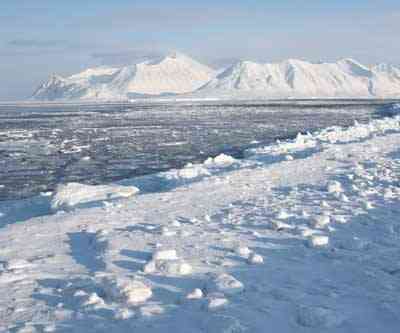
More than 2,000 international experts will meet in Montreal, Canada, next week to discuss the latest research about how climate change is altering the Arctic faster than the inhabitants, and the governments that regulate the phenomenon, can keep up with.
The scientists will discuss the findings of International Polar Year, which lasted from 2007 to 2009, had funding of more than $1.2 billion and resulted in hundreds of published papers.
The latest report from London-based think-tank Lloyd’s/Chatham House, published last week, says the melting ice cap in the Arctic Sea could open up access to immense mineral reserves, attracting billions of dollars in investment. However, the study also warns about the unique risks and challenges of mining in the area, an activity that would attract investments of over US$100 billion in the region over the next decade.
“Cleaning up any oil spill in the Arctic, particularly in ice-covered areas, would present multiple obstacles, which together constitute a unique and hard-to-manage risk,” says the document.
The reduction in Arctic sea ice hasn’t only opened up new shipping routes that significantly cut transport times and distances between Europe and Asia, it has also made the region’s rich deposits of oil, gas and minerals more accessible.
The topic is undoubtedly going to generate heated discussions.
One of the speakers, University of Winnipeg ice specialist David Barber, told CBC that while the Arctic is becoming rapidly more integrated with the global economy, the situation in the area is “extremely dramatic.”
Ice once attached to the land is breaking off and forming icebergs in the Beaufort Sea, where energy companies hope to start exploratory drilling.
“There are more of [those icebergs] and they are a much larger hazard than they used to be,” said Barber.
Sea ice loss – together with the loss of winter snow cover – is also causing rapid declines in animals such as gulls and walruses.
Local aboriginal communities, whose diet depends on their ability to hunt and fish, are finding themselves stranded, he added.
Presently, there are 25 mines operating in the Russian Arctic, while 36.8% of Alaska’s 2010 foreign export earnings came from exports of zinc, lead, gold and copper. Greenland is home to a number of mines.
Mining accounts for half the income of Canada’s Northwest Territories, while the Mary River Iron Ore Project on Baffin Island in Nunavut is due to begin development in 2013.
“In northern Scandinavia, there are mining prospects across northern Sweden and Finland, and iron mines in Kirkenes (in northern Norway) and Kiruna,” says the study. “The latter is the world’s largest underground iron ore mine and the world’s largest Arctic mine – yet most of the ore is currently unmined.”
The Arctic region, which spans Alaska, Russia, Norway and Greenland, may contain as much as 30% of the world’s undiscovered gas and 13% of the world’s undiscovered crude oil, according to the U.S. Geological Survey.
2 Comments
Joan
The thought that allegedly sane people could discuss the idea of mining or seeking oil in the now exposed arctic is chilling. These people apparently do not have the wit to understand that it was exactly these operations throughout the world that exposed the entire world to global warming. Perhaps they failed to notice the catastrophic floods, fires, drought
and more that has caused massive loss of life, property and food
producing land. Unless we want our planet to be without life of any kind with the climate of Venus all of this must stop. I wonder what they expect to eat and who will be able to afford it? Or maybe that is the point, continue what they are doing until such massive loss of life allows them own it all.
Does no one but me finds this both predictable and horrific?
instant payday loan
Warming of the climate system is unequivocal, and scientists are more than 90% certain that most of it is caused by increasing concentrations of greenhouse gases produced by human activities such as deforestation and the burning of fossil fuels.These findings are recognized by the national science academies of all major industrialized nations.